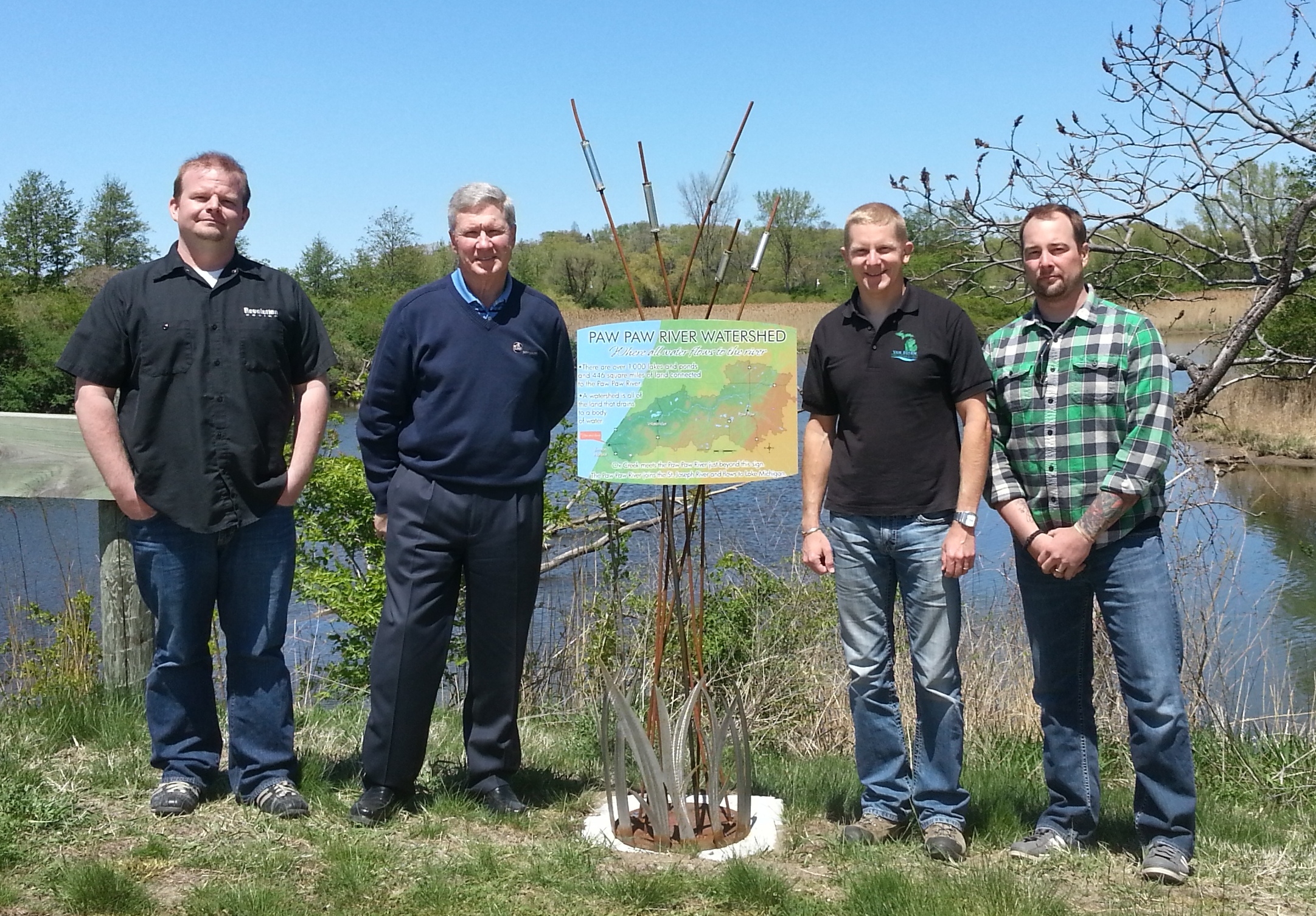Local Businesses and Organizations Unveil Educational Signs for American Wetlands Month
The Van Buren Conservation District put the finishing touches on the Paw Paw and Black Rivers Wetland Project just in time to celebrate American Wetlands Month. Five educational signs were recently installed throughout the Harbor Shores golf course and public trail system in Benton Harbor. The signs were the result of a partnership between the Conservation District, Harbor Shores, Revolution Design and WYNN Waterjet & CNC Machining, all of which donated generous amounts of time and money to complete the project.
This May is the 23rd anniversary of American Wetlands Month, which provides an opportunity to celebrate the vital importance of wetlands to the Nation's health. Wetlands occur where land and water meet. They clean our water, prevent floods and provide wildlife habitat. Acre for acre, wetlands offer more water quality benefits and produce more wildlife and plants than any other Michigan habitat type.
“Unfortunately, about 50% of the wetlands in southwest Michigan have been filled for development or drained for agriculture in the last 200 years. We have been working with landowners, municipalities and other partners over the last 3 years to protect what is left and bring back some of what has been lost,” said Matt Meersman of the Van Buren Conservation District. The wetland project has resulted in the permanent protection of over 400 acres of high priority wetland and the restoration of almost 70 acres of wetland.
The installation of the wetland signs is one of the most visible and long lasting of the many educational efforts that took place during the project. Robert Piner created the sign panels, which are displayed on metal cattail sculptures designed by Jim Steinke and built by Dan Mitowski. Each one presents a different message about wetlands and clean water that is connected to the landscape surrounding the sign. According to Bob McFeeter of Harbor Shores, “the signs have an important message and their location offers the viewer an example of what the sign is about.”
The Van Buren Conservation District promotes the conservation of natural resources through partnerships by providing public education, demonstrations and technical assistance, while working together for future generations.
For more information on this topic, or to schedule an interview with one of the partners, please call Matt Meersman at (269) 657-4030 xt.115 or email Matt at paddleheadz@gmail.com or visit:
http://vanburencd.org/programs-services/watershed-projects.

Photo Included: Project partners in front of wetland sign.
From left to right - Robert Piner, Bob McFeeter, Matt Meersman, Jim Steinke